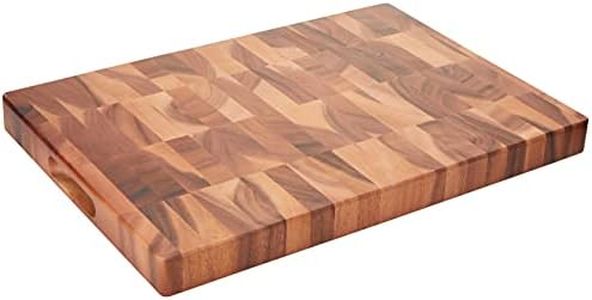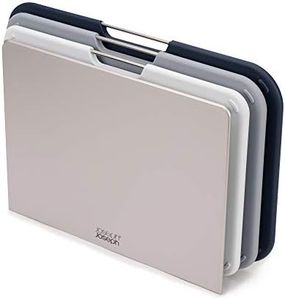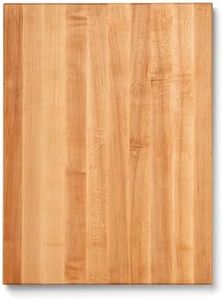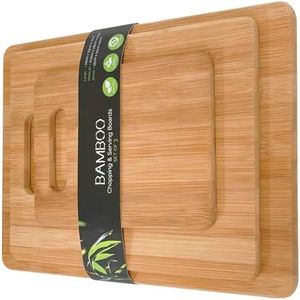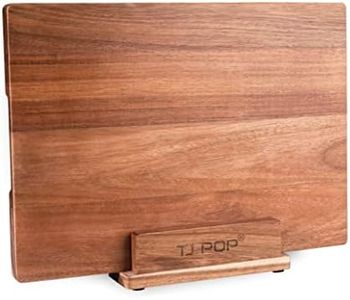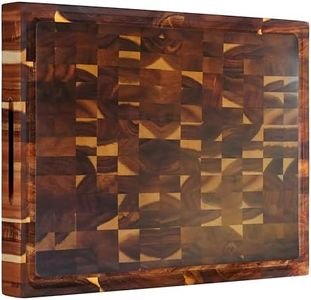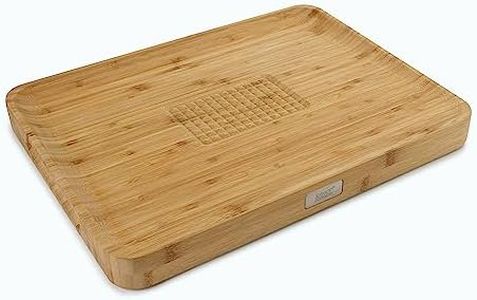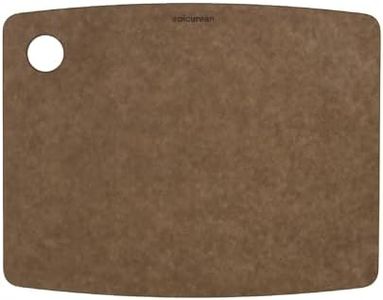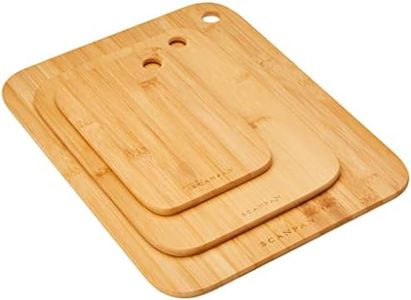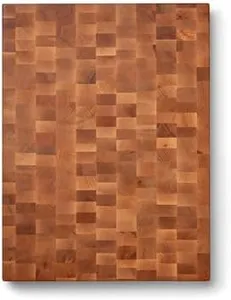We Use CookiesWe use cookies to enhance the security, performance,
functionality and for analytical and promotional activities. By continuing to browse this site you
are agreeing to our privacy policy
10 Best Wooden Cutting Boards
From leading brands and best sellers available on the web.Buying Guide for the Best Wooden Cutting Boards
When choosing a wooden cutting board, it's important to think carefully about your cooking habits, the size of your kitchen, and how you like to care for your kitchen tools. A cutting board is more than just a flat surface—it's where you'll prep your meals, chop vegetables, and carve meats. The right board will protect your knives and make cooking safer and more enjoyable. To find a board that fits your needs, you'll want to look at the type of wood, size, thickness, grain orientation, and how easy the board is to maintain.Wood TypeThe type of wood determines the board’s durability, how gentle it is on your knives, and even its resistance to bacteria and stains. Hardwoods like maple, walnut, and cherry are popular because they are strong enough to last but not so hard that they damage your knives. Softer woods can get marked up more quickly and may harbor bacteria, whereas very hard woods might dull your blades. To decide, think about how often you’ll use the board—if it’s for daily use, a hardwood is ideal; for lighter, occasional prep, you might get away with a softer wood.
Grain OrientationWooden boards come in end grain and edge grain styles. End grain boards are made with the ends of the wood facing up, making them softer on knife edges and showing fewer cut marks over time. Edge grain boards use the side of the wood and are usually less expensive but can show knife marks and wear down faster. If you do a lot of chopping, especially with sharp knives, end grain is the best choice for longevity and maintaining your knife’s edge. For general, everyday use with less intensive prep, edge grain will be suitable.
SizeThe size of your cutting board affects how comfortable it is to use and store. Small boards are convenient for slicing fruit or making sandwiches but can feel cramped when prepping big meals. Larger boards give you room to work and keep different foods separate, but they need more counter and storage space. Think about what you usually prepare and how much room you have—if you frequently cook large meals or whole roasts, go bigger; for quick tasks or if counter space is limited, choose something more compact.
ThicknessThickness impacts stability and lifespan. Thicker boards (usually above 1 inch) are sturdier, less likely to warp over time, and better absorb shocks from chopping, making them great for heavy-duty use. Thinner boards are lighter and easier to move or store, but they can slip on the counter and may warp if not dried properly. If you’re looking for a daily workhorse, opt for a thicker board; if you need portability or will store the board upright, a thinner version may work better for you.
Ease of CareWooden cutting boards require regular oiling to prevent them from drying out and cracking, and they should not be put in the dishwasher or left soaking in water. Some boards come pre-treated, but all will eventually need routine care. Consider how much time you’re willing to invest—if you want something long-lasting and don’t mind a bit of maintenance, go for it; if you want a more carefree option, you may need to rethink wood or choose a simpler board that’s quicker to clean.
